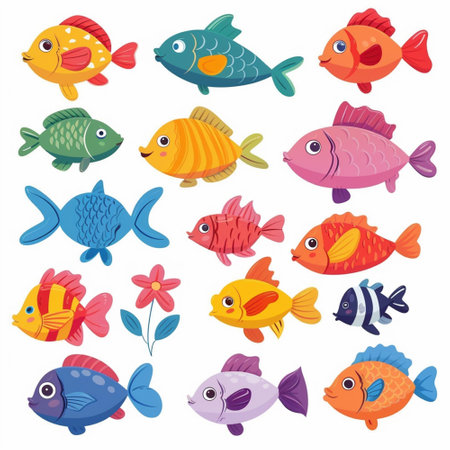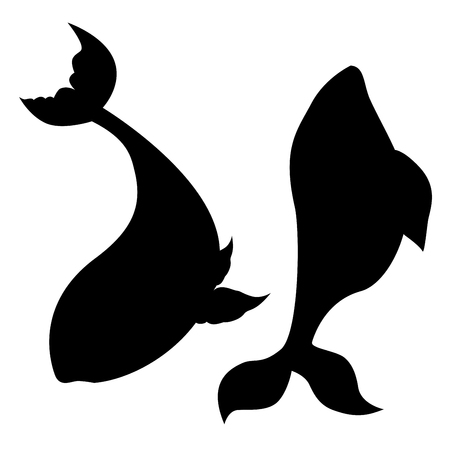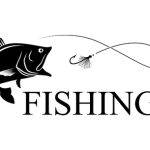1. Introduction to Surf Fishing and Game Fish Species
Surf fishing is one of the most exciting and accessible ways to enjoy saltwater angling along the U.S. coastline. Whether youre casting your line into the Atlantic Ocean, Gulf of Mexico, or Pacific shores, surf fishing offers a unique blend of challenge and reward. It’s popular with beginners and seasoned anglers alike because you don’t need a boat—just some gear, bait, and access to a beach.
This style of fishing involves casting from the shoreline into the surf zone, where waves break and stir up food sources that attract various game fish. Each region of the U.S. has its own set of prized catches, but many species can be found across multiple coastlines depending on the season and water temperature.
Why Is Surf Fishing So Popular?
- Accessibility: No need for a boat—just walk to your local beach.
- Diverse Targets: A wide range of fish species are within reach.
- Low Cost: Basic gear like rods, reels, and bait are often all you need.
- Family-Friendly: Great for spending time with friends or family outdoors.
Common Game Fish in Surf Fishing
Different regions in the U.S. offer unique game fish opportunities. Heres a breakdown of some of the most commonly targeted species in surf fishing:
| Fish Species | Main Regions | Typical Size | Main Season |
|---|---|---|---|
| Striped Bass | Northeast & Mid-Atlantic (e.g., New Jersey, Massachusetts) | 20–40 inches | Spring & Fall |
| Redfish (Red Drum) | Southeast & Gulf Coast (e.g., Florida, Texas) | 18–30 inches | Fall & Winter |
| Pompano | Southeast Atlantic & Gulf Coast (e.g., Florida) | 10–18 inches | Spring & Summer |
A Closer Look at These Species
Striped Bass: Known for their powerful runs and aggressive strikes, stripers are a favorite among East Coast anglers. They tend to follow baitfish close to shore during migration seasons.
Redfish: Often found near sandbars and troughs, redfish love crustaceans like shrimp and crabs. Theyre especially active in cooler months along southern coasts.
Pompano: Small but scrappy fighters, pompano thrive in warm waters and are usually caught using sand fleas or small jigs near the surf line.
The Role of Local Conditions
The behavior of these game fish is heavily influenced by tides, water temperature, time of day, and weather patterns. Successful surf fishing often comes down to understanding how these variables affect where fish feed and move along the shore.
2. Tides, Currents, and Water Temperature
When it comes to surf fishing, understanding the science behind tides, currents, and water temperature can seriously improve your chances of landing a great catch. These natural factors have a huge influence on where fish are located and how actively theyre feeding. Lets break down how each element affects common game fish behavior along U.S. shorelines.
How Tidal Patterns Affect Fish Movement
Tides are one of the biggest drivers of fish activity near the shore. As the tide rises and falls, it changes the depth and flow of water along beaches, inlets, and sandbars—bringing baitfish and other food sources with it. Predatory game fish often follow these movements closely.
Best Times to Fish Based on Tides
| Tide Stage | Fish Behavior | Recommended Action |
|---|---|---|
| Incoming (Flood) Tide | Fish move closer to shore following bait | Great time to cast near structures or deeper troughs |
| High Tide | Fish spread out; can be harder to locate | Target known structure areas like jetties or rock piles |
| Outgoing (Ebb) Tide | Bait is pulled out; fish feed aggressively | Fish near channels and drop-offs as water recedes |
| Low Tide | Less movement; fish hold in deeper pockets | Focus on deeper holes or wait for tide change |
The Role of Currents in Surf Fishing
Currents help move food through the surf zone, creating natural feeding lanes for predatory species like striped bass, red drum, and bluefish. Understanding longshore currents (which run parallel to the beach) and rip currents can help you identify where bait is gathering—and where game fish will likely be hunting.
Where to Cast When Currents Are Strong
- Rip Currents: Fish may wait at the edges to ambush prey swept out by fast-moving water.
- Eddies or Current Breaks: These calmer spots behind rocks or sandbars are prime fishing zones.
- Pocket Water: Look for dips in the sandbar where water funnels through—a hotspot for feeding activity.
Water Temperature: A Game-Changer for Activity Levels
Each species has a preferred temperature range that triggers their metabolism and feeding habits. For example, pompano thrive in warm waters above 70°F, while striped bass prefer cooler temps around 55–68°F. If the water’s too cold or too hot, fish may become sluggish or move offshore.
Ideal Water Temperatures for Common Game Fish
| Species | Preferred Temp Range (°F) | Behavioral Notes |
|---|---|---|
| Pompano | 70–85°F | Migrates north in spring; active in warmer surf zones |
| Striped Bass | 55–68°F | Bite slows if temps rise above comfort zone |
| Red Drum (Redfish) | 65–75°F | Loves warmer shallows during incoming tide |
| Bluefish | 60–72°F | Aggressive feeders when temps are ideal; often found chasing schools of baitfish near current breaks |
Tying It All Together on Your Next Trip
If youre planning a surf fishing trip, check local tide charts, water temperature reports, and wind conditions ahead of time. Matching your approach to these natural patterns gives you a better chance of connecting with feeding fish. Don’t just cast blindly—use nature’s cues to guide your strategy.
The ocean might seem random at first glance, but once you tune into its rhythm—tides rising and falling, currents shifting, temperatures changing—you’ll start seeing patterns that lead straight to hungry fish.

3. Feeding Habits and Preferred Prey
Understanding what surf game fish eat and when they feed is key to increasing your chances of success on the beach. Different species have different feeding habits, but knowing their preferences helps anglers choose the right bait and time their outings for maximum results.
When Do Game Fish Feed?
Most common surf game fish are opportunistic feeders, meaning they eat when food is available. However, many have preferred feeding times based on tides, light levels, and water temperature. For example:
| Fish Species | Preferred Feeding Time |
|---|---|
| Striped Bass | Dawn, dusk, and during moving tides |
| Redfish (Red Drum) | Early morning and late afternoon |
| Pompano | Daylight hours with incoming tide |
| Bluefish | Dawn and dusk, especially during bait runs |
What Do They Eat?
The diet of surf game fish varies by species, but most feed on smaller fish, crustaceans, or marine worms. Matching your bait to their natural food can make a big difference.
| Fish Species | Common Natural Prey |
|---|---|
| Striped Bass | Bunker (menhaden), sand eels, clams |
| Redfish (Red Drum) | Shrimp, crabs, mullet |
| Pompano | Sand fleas (mole crabs), small shrimp |
| Bluefish | Mullet, bunker, squid |
Choosing Bait That Mimics Natural Food
Selecting bait that resembles the local prey these fish are hunting increases your chances of getting bites. You can go with live bait, fresh-cut bait, or even artificial lures designed to look like native forage.
Bait Tips for Common Surf Species:
- Striped Bass: Use fresh clams or sand eel imitations when theyre around inshore.
- Redfish: Try live shrimp or cut mullet near troughs and holes in the surf zone.
- Pompano: Sand fleas work great; small jigs tipped with shrimp also do well.
- Bluefish: Cut bait like mullet or bunker is ideal; flashy spoons can trigger aggressive strikes.
Pro Tip:
If youre not sure whats running in your area, check local fishing reports or talk to other anglers on the beach. Matching the hatch—using bait that mimics what’s naturally in the water—is one of the most effective ways to draw strikes from feeding fish.
4. Seasonal Movement and Migration Patterns
Understanding the seasonal movements and migration patterns of common game fish is key to becoming a more successful surf angler. Many species follow predictable routes throughout the year based on water temperature, spawning cycles, and food availability. Knowing where the fish are likely to be—and when—can dramatically improve your chances of landing a great catch from the beach.
Why Fish Migrate
Most game fish migrate for two main reasons: to spawn and to find food. As water temperatures change with the seasons, so do the locations where fish can thrive. In spring and fall, many species move closer to shorelines, making them more accessible to surf anglers. During summer and winter, their behavior shifts again, often moving deeper or farther along the coast.
Peak Seasons for Common Surf Game Fish
The table below outlines typical migration patterns and peak surf fishing seasons for several popular game fish species found along U.S. coastlines:
| Species | Migration Pattern | Peak Surf Fishing Season | Key Water Temperature Range (°F) |
|---|---|---|---|
| Striped Bass | Migrates north in spring, south in fall along the Atlantic coast | Spring (April–June), Fall (September–November) | 50–65°F |
| Redfish (Red Drum) | Inshore during spring/summer; offshore in colder months | Late Summer (August) through Fall (October) | 65–75°F |
| Pompano | Migrates north in spring, south in fall along Gulf and Atlantic coasts | Spring (March–May), Fall (September–November) | 70–80°F |
| Bluefish | Migrates northward in spring, southward in fall | Spring (April–June), Fall (September–October) | 55–70°F |
| Flounder | Moves inshore during warmer months; offshore to spawn in winter | Spring through Early Fall (April–September) | 60–75°F |
How Water Conditions Affect Migration
Water temperature is one of the biggest factors influencing fish movement. For example, striped bass tend to stay within a specific temperature range, moving north or south along the East Coast depending on the season. Salinity levels, oxygen content, and current flow also play roles in where schools of fish will travel and congregate.
Spawning Behavior Ties Into Timing
Many game fish species time their migrations with spawning cycles. Redfish move into estuaries and nearshore areas during late summer to spawn, while flounder head offshore in late fall for the same reason. Learning these behaviors helps you plan surf fishing trips around peak activity times.
Quick Tip:
If youre not sure when local migrations happen near you, talk to nearby bait shops or check regional fishing reports—they often track seasonal runs and local conditions that can clue you into when its “go time” on the beach!
The better you understand how different species migrate throughout the year, the easier it becomes to anticipate their presence near shorelines—and maximize your surf fishing success.
5. Tactical Approaches Based on Fish Behavior
Understanding how game fish behave in the surf zone can help you fish smarter, not harder. When you know where they feed, how they move with tides, and what triggers a bite, you can adjust your tactics to increase your chances of success. Below are practical strategies that connect fish behavior with gear choices, bait presentation, and casting techniques.
Gear Selection Tailored to Target Species
The right gear can make a big difference depending on the species youre after. For example, if youre targeting striped bass that cruise just beyond the breakers, youll need longer rods for greater casting distance. On the other hand, pompano often feed closer to shore, so lighter tackle may be more effective.
| Target Species | Rod Length | Reel Type | Line Strength |
|---|---|---|---|
| Striped Bass | 10-12 ft | Spinning or Conventional | 20-30 lb braid |
| Pompano | 8-10 ft | Spinning | 10-15 lb mono or braid |
| Redfish | 9-11 ft | Spinning | 15-25 lb braid |
Bait Presentation That Matches Feeding Patterns
Game fish in the surf often rely on sight and scent when hunting prey. Presenting bait naturally is key. For instance, if youre fishing for redfish during a high tide near troughs, using fresh cut mullet on a fish-finder rig can be very effective since it mimics their natural forage.
Bait Tips Based on Fish Behavior:
- Pompano: Use sand fleas or shrimp on a double dropper rig; keep bait moving slightly with current to mimic natural movement.
- Striped Bass: Try bunker chunks or live eels during low-light conditions when they tend to feed aggressively.
- Redfish: Present cut bait close to structure like jetties or troughs where they ambush prey.
Casting Techniques Aligned with Tidal Movement
Tides play a huge role in surf fishing. Many game fish follow the incoming tide as it pushes bait closer to shore. Casting into deep holes, cuts between sandbars, or near structures during these times gives you an edge.
Casting Strategy Quick Guide:
| Tide Condition | Casting Location | Recommended Technique |
|---|---|---|
| Incoming Tide | Troughs and sandbar edges | Long casts with heavy sinkers to hold position in current |
| High Tide | Narrow cuts and deeper pockets close to shore | Medium-distance casts with lighter rigs for subtle presentation |
| Outgoing Tide | Mouths of channels or run-outs draining water back to sea | Casts aligned with current flow using scented baits for visibility |
The more you learn about how different fish behave in the surf zone, the better you can match your tactics to their patterns. By paying attention to gear selection, bait presentation, and casting strategy based on conditions and species behavior, youll have a much better shot at landing your next trophy from the beach.


